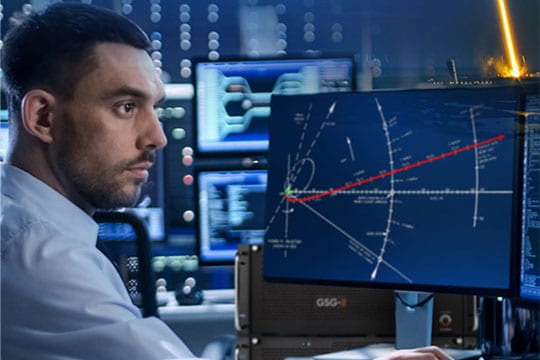
# Case Studies
Rocket into Orbit with a GSG-8 Advanced GNSS Simulator
Easily Simulate Space Trajectories Without Tedious Programming
A major commercial aerospace manufacturer needed to launch small cube satellites into Low Earth Orbit (LEO) and Medium Earth Orbit (MEO), with small to medium sized payloads that supported Commercial Lunar Payload Services. Their goal was to simulate GNSS signals with their rockets, each of which had two antennas.
In the past, this would have required two Safran GSG6s, a SecureSync, and the need to write algorithms from scratch.
Today, Safran’s new GSG-8 Advanced Simulator offers all of these capabilities turnkey, at a lower cost and with a much easier user experience. Its simple, out-of-the-box set-up and intuitive scenario creation were engineered to waste no time getting right down to the fundamentals. Its multi-instance capability acts as two separate simulators: There are two built-in Software-Defined Radios (SDRs) that are already synced. In addition, its Python, C# and C++ scripting capability eliminate the need to write custom APIs.
In particular, its 1000 Hz iteration rate and hardware-in-the-loop (HIL) ability made the GSG-8 ideal for the high speed, high dynamics applications that this customer required.

The customer plans to launch five more rockets by the end of 2020 and 24 rockets over the next five years. Currently, there is one rocket at their test site and another at their base in California. They intend to acquire additional GSG-8s at all company sites.
If you need to simulate space trajectories, the GSG-8 Advanced GNSS Simulator lets you do so quickly and easily. The built-in automation function and spacecraft trajectory editor add to its ease-of-use, and the multi-instance feature allows you to test multiple vehicles, antennas or receivers with a single test.
Safran’s GSG-8 delivers the most comprehensive and unparalleled solution in the commercial market today. Best of all – it is available for rapid delivery at a very competitive price.


